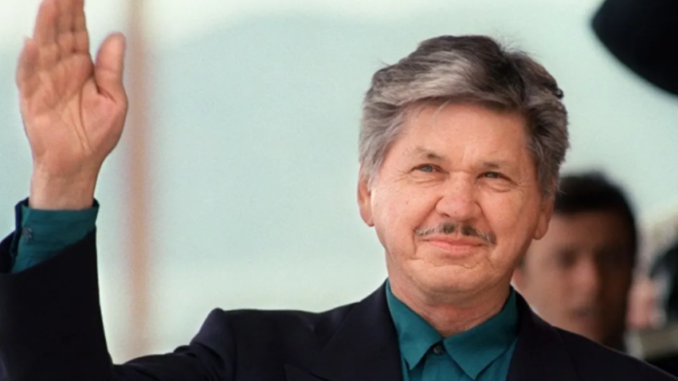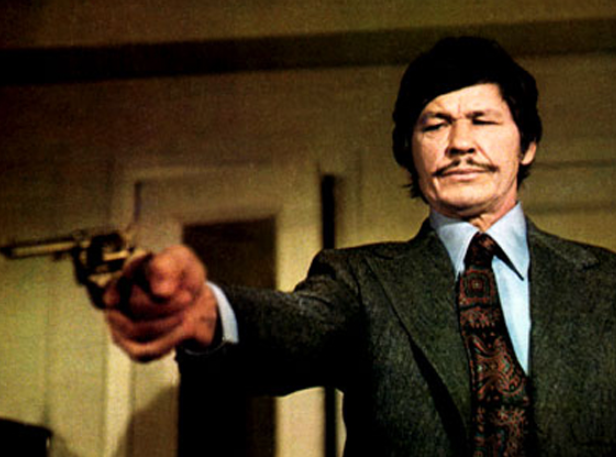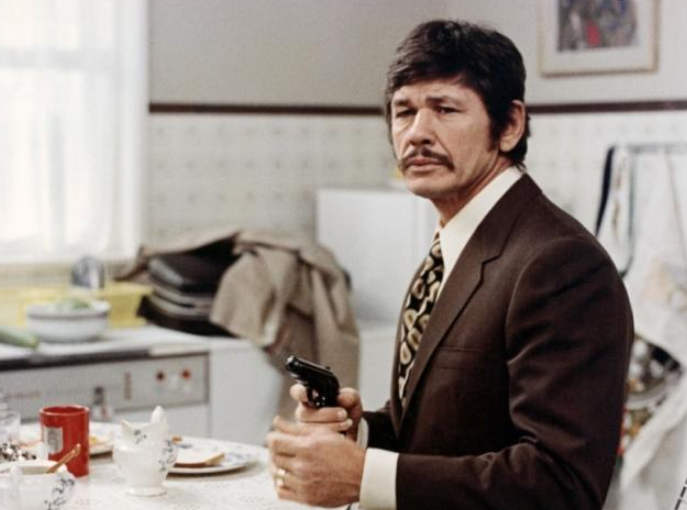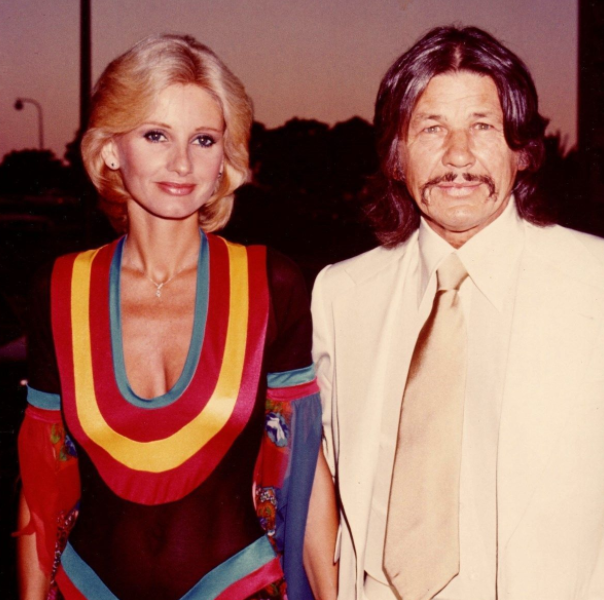
Charles Bronson was an actor from the USA who was famous for the role of a police officer, gunfighters, and vigilante in the revenge-oriented plotline. He had long-term associations with film directors like Michael Winner and J. Lee Thompson and had also appeared in 15 films with his second wife, Jill Ireland. In the early 1970s, he was the world’s No. 1 box office attraction, commanding $1 million per film. He was best known for playing tough-guy, vigilante roles in films like “The Magnificent Seven” and “Death Wish”. In his youth, he worked as a coal miner until he was drafted to serve in World War II. His other films include “The Dirty Dozen” (1967), “Ten to Midnight” (1983), “The President’s Assassin” (1987), “Death Wish V” (1994), and “Dead to Rights” (1995). He was one of the most talented and versatile actors of the American film industry and was also known for portraying archetypical hard-hitting characters with panache.
What was Charles Bronson Famous For?
- Being an American Actor.
- Bronson was described as “still suspicious, still holds grudges, still despises interviews, still hates to give anything of himself, still can’t believe it has really happened to him.”
Charles Bronson Cause of Death
On 30th August 2003, Charles Bronson passed away at age of 81 at Cedars-Sinai Medical Center in Los Angeles. His health deteriorated in his later years, and he retired from acting after undergoing hip-replacement surgery in August 1998. Although it was said that his death was from pneumonia and Alzheimer’s disease. But, he was suffering from diseases like “respiratory failure”, “metastatic lung cancer”, with, secondarily, “chronic obstructive pulmonary disease” and “congestive cardiomyopathy” which were not cited as his cause of death. He was interred at Brownsville Cemetery in West Windsor, Vermont.

Source: @biography
Where was Charles Bronson From? Details About His Family, Siblings, and Ethnicity
Charles Bronson was born on 3rd November 1921 with the birth name of Charles Dennis Buchinsky. He was born as the eleventh of fifteen children, into a Roman Catholic family of Lithuanian descent in Ehrenfeld, Pennsylvania, in the coal region of the Allegheny Mountains north of Johnstown, Pennsylvania. He lastly celebrated his 81st birthday. By nationality, he was American-Lithuanian and his ethnicity was Mixed. His father, Valteris P. Bučinskis was a Lipka Tatar, who later adjusted his name to Walter Buchinsky to sound more American, was from Druskininkai in southern Lithuania and his mother, Mary (née Valinsky) whose parents were from Lithuania, was born in the coal-mining town of Tamaqua, Pennsylvania. He did not speak any English at home during his childhood in Pennsylvania, like many children he grew up with. He was 10 when his father died and he started working in mine too. He later said he earned one dollar for each ton of coal that he mined. In another interview, he said that he had to work double shifts to earn $1 a week. He recalled going hungry many times. He had fourteen siblings. One of his brother’s names was Roy Buchinsky. Scorpio was his Zodiac sign and he followed the Christian religion.
Charles Bronson was the first member of his family to graduate from high school. After his graduation from South Fork High School, he went to Pasadena Playhouse. Next, he worked in the mine until he enlisted in the United States Army Air Forces in 1943 during World War II. He served in the 760th Flexible Gunnery Training Squadron, and in 1945 as a Boeing B-29 Superfortress aerial gunner with the Guam-based 61st Bombardment Squadron within the 39th Bombardment Group, which conducted combat missions against the Japanese home islands. He flew 25 missions and received a Purple Heart for wounds received in battle.
Charles Bronson Career Timeline
- Charles Bronson began working at many odd jobs until joining a theatrical group in Philadelphia, Pennsylvania.
- He shared an apartment in New York City with Jack Klugman while both were aspiring to play on the stage.
- In the year 1950, he moved to Hollywood, got into acting classes, and began to act in small roles.
- His first film role; an uncredited one was as a sailor in “You’re in the Navy Now” in the year 1951 which was directed by Henry Hathaway.
- His other early screen appearances were The Mob (1951); The People Against O’Hara (1951), directed by John Sturges; Bloodhounds of Broadway (1952); Battle Zone (1952); Pat and Mike (1952), as a boxer and mob enforcer; Diplomatic Courier (1952), another for Hathaway; My Six Convicts (1952); The Marrying Kind (1952); and Red Skies of Montana (1952).
- He boxed in a ring with Roy Rogers in Rogers’ show “Knockout” in the year 1952.
- Further, he appeared on an episode of “The Red Skelton Show” and appeared with fellow guest star Lee Marvin in an episode of “Biff Baker, U.S.A.”
- He then had a small role in Miss Sadie Thompson (1953); House of Wax (1953), directed by Andre DeToth; The Clown (1953); Torpedo Alley (1953); and Riding Shotgun.
- He then changed his surname from Buchinsky to Bronson in 1954 during the House Un-American Activities Committee (HUAC) proceedings.
- With a surname, he had a notable support part as an Apache, “Hondo”, in the film Apache (1954) for director Robert Aldrich, followed by roles in Tennessee Champ (1954) for MGM, and Crime Wave (1954).
- His first film as Charles Bronson was “Vera Cruz” (1954). He then made a strong impact as the main villain in the Alan Ladd western “Drum Beat”.
- He was in “Target Zero” (1955), “Big House, U.S.A.” (1955), and had a significant role in the Daves western “Jubal” (1956), starring Glenn Ford.
- After that, he had the lead role in the episode “The Apache Kid” of the syndicated crime drama “The Sheriff of Cochise”.
- He was then cast twice in 1959 after the series was renamed “U.S. Marshal”.
- Furthermore, he guest-starred in the short-lived CBS situation comedy, “Hey, Jeannie!” and in three episodes of Alfred Hitchcock Presents: “And So Died Riabouchinska” (1956), “There Was an Old Woman” (1956), and “The Woman Who Wanted to Live” (1962).
- In addition, he was cast in the Western series “Colt .45” in the year 1957 and also had a support role in Sam Fuller’s “Run of the Arrow” (1957).
- He appeared as Butch Cassidy on the TV western Tales of Wells Fargo in 1958 in the episode of “Butch Cassidy”.
- He played the lead in the ABC’s detective series “Man with a Camera” (1958-1960) portraying Mike Kovac.
- After that, he played the roles in “Machine-Gun Kelly” (1958), a biopic of a real-life gangster directed by Roger Corman as well as starred in “Gang War” (1958), “When Hell Broke Loose” (1958), and “Showdown at Boot Hill” (1959).
- Regarding his television work, he played Steve Ogrodowski, a naval intelligence officer, in two episodes of the CBS military sitcom/drama, “Hennesey” and also played Rogue Donovan in “Yancy Derringer” (episode: “Hell and High Water”).
- Next, he starred in a “Twilight Zone” episode (“Two”; 1961) and also appeared in five episodes of Richard Boone’s “Have Gun – Will Travel” (1957-1963).
- Likewise, he had a support role in an expensive war film, “Never So Few” in the year 1959, and was cast in the 1960 episode ‘Zigzag’ of “Riverboat”.
- In the same year, he was cast as “Dutch Malkin” in the episode “The Generous Politician” of “The Islanders” and appeared as Frank Buckley in the TV western “Laramie” in the 1960 episode ‘Street of Hate’.
- He came to fame in 1960 after he appeared in “The Magnificent Seven”.
- In 1961, he was seen in the role of a boxer, in an episode of “One Step Beyond” (S3E16, titled “The Last Round”).
- He played in the romantic lead of “Master of the World” (1961), supporting Vincent Price.
- Likewise, he had a support role in MGM’s “A Thunder of Drums” (1961) but a bigger part in “X-15” (1961).
- Later, he played the supporting role in an episode entitled “Memory in White” of CBS’s “General Electric Theater” in 1961.
- He appeared alongside Elvis Presley in “Kid Galahad” in 1962 and after a year, he co-starred in the series “Empire”.
- He was then cast in the Hollywood production, “The Great Escape” (1963) and played the role of villain in “4 for Texas” in the same year.
- From 1963 to 1967, he was cast in a number of television series, including “The Travels of Jaimie McPheeters”, “The Legend of Jesse James” and “Combat!”.
- He made an excellent role in “The Dirty Dozen” which had Lee Marvin and Ernest Borgnine alongside him in the star cast in 1967.
- Moving to Europe, he landed a number of roles in European films, such as “Once Upon a Time in the West”, “Guns for San Sebastian”, and “Cold Sweat”. He was also cast in the French film “Rider on the Rain”.
- Next, he starred in “The Valachi Papers”, “The Mechanic” and “The Stone Killer”.
- In 1974, his famous role came in “Death Wish” at the age of 52 as Paul Kersey which was such a massive success that it spawned the release of four sequels in the next two decades, each having him reprise his role as Kersey.
- He starred in two films directed by Tom Gries: “Breakout” (1975), and “Breakheart Pass” (1975).
- He then starred in Walter Hill’s “Hard Times” in 1975 which was shot in the Depression era, earned favorable reviews from the critics and audiences alike. It cemented his status as an action hero. His fans considered it to be his best role to date.
- Following the release of back-to-back successful films, he appeared in average hits like “Breakheart Pass”, “From Noon Till Three” and “Telefon”.
- He went on to make two films for ITC, “Love and Bullets” (1979) and “Borderline” (1980).
- The ensuing decade had him playing increasingly violent roles in films, such as “10 to Midnight”, “The Evil That Men Do”, “Assassination”, and “Kinjite: Forbidden Subjects”.
- He was then seen in the TV movie “Act of Vengeance” in 1986.
- He then gave an impressive performance in “The Indian Runner”. The film “Yes Virginia, there is a Santa Claus” was a breakaway from violent roles as it had him playing a compassionate newspaper editor and also he appeared in “The Sea Wolf” (1993).
- His last starring role in a theatrically released film was 1994’s “Death Wish V: The Face of Death”.
- His final films were a trilogy of TV movies which were Family of “Cops” (1995), “Breach of Faith: A Family of Cops 2” (1997), and “Family of Cops 3” (1999).

Source: @filmkatalogus
Charles Bronson Awards and Achievements
- In 1961, Charles Bronson was nominated for an Emmy Award for his supporting role in an episode entitled “Memory in White” of CBS’s General Electric Theater, hosted by Ronald Reagan.
- Playing the lead in a French thriller, Rider on the Rain (1970) which was a big hit in France which won a Hollywood Golden Globe Award for Best Foreign Language Film.
- He earned a special Golden Globe Henrietta Award for “World Film Favorite – Male” together with Sean Connery.
- Charles Bronson received a “Purple Heart” for enduring wounds during his service in the war.
- Awarded the “Golden Boot Awards” which was his first-ever winning award in 1996
- Won Henrietta Award for “World Film Favorite” in Golden Globes, the USA in 1972.
- Won Star on the Walk of Fame for Motion Picture’ in the year 1980.
Charles Bronson Married Life: Who was he married to?
Charles Bronson was a married man. He was firstly married to his wife, Harriet Tendler in the year 1949. They met each other in Philadelphia when they were fledgling actors. Together they had two children namely ‘Tony’ and ‘Suzanne’. Later, they divorced in 1965. On 5th October 1968, Charles married his second wife, Jill Ireland whom he met in the year 1962. At that time, she was married to a Scottish actor, David McCallum and they even shared a screen together in The Great Escape. Bronson and Jill had two babies together namely Zuleika Bronson and Katrina Holden Bronson. They were married until Jill died of breast cancer on 18th May 1990 at the age of 54. Their daughter, Katrina is an American film director. After that, he married for the third time to the former employee of Dove Audio, Kim Weeks in December 1998. The couple was married for five years until Bronson’s death in 2003. His sexual orientation was straight and he was not gay.

Source: @rarecultcinema
Charles Bronson Net Worth and Career Earnings
Charles Bronson was a talented and successful American actor whose net worth was estimated to have estimated net worth was $13 Million at the time of his death. At the peak of his career, he was the highest-earning actor and was paid $1 million for each of “The Stone Killer”, “Chino”, “Death Wish” and “St. Ives”. He earned $1.5 million for “Death Wish II” and earned $2 million for “10 To Midnight” in 1982. He also received 10-15% of gross receipts from movie ticket sales and film rentals from Warner Brothers. His source of wealth was from his acting career. Prior to his demise, he was living a lavish lifestyle. He had various brand deals and was the face of various big companies. Details about his exact income, salary details, and career earnings have not been disclosed yet.
How tall was Charles Bronson?
Charles Bronson was a handsome actor during his time who had lured a lot of ladies from his great personality and charming smile. His height was 5 ft 8 in or 1.74 m and his weight consisted of 75 Kg or 165 lbs. His hair color is Salt and Pepper and he had a pair of dark brown eyes. His body build was athletic.
Leave a Reply